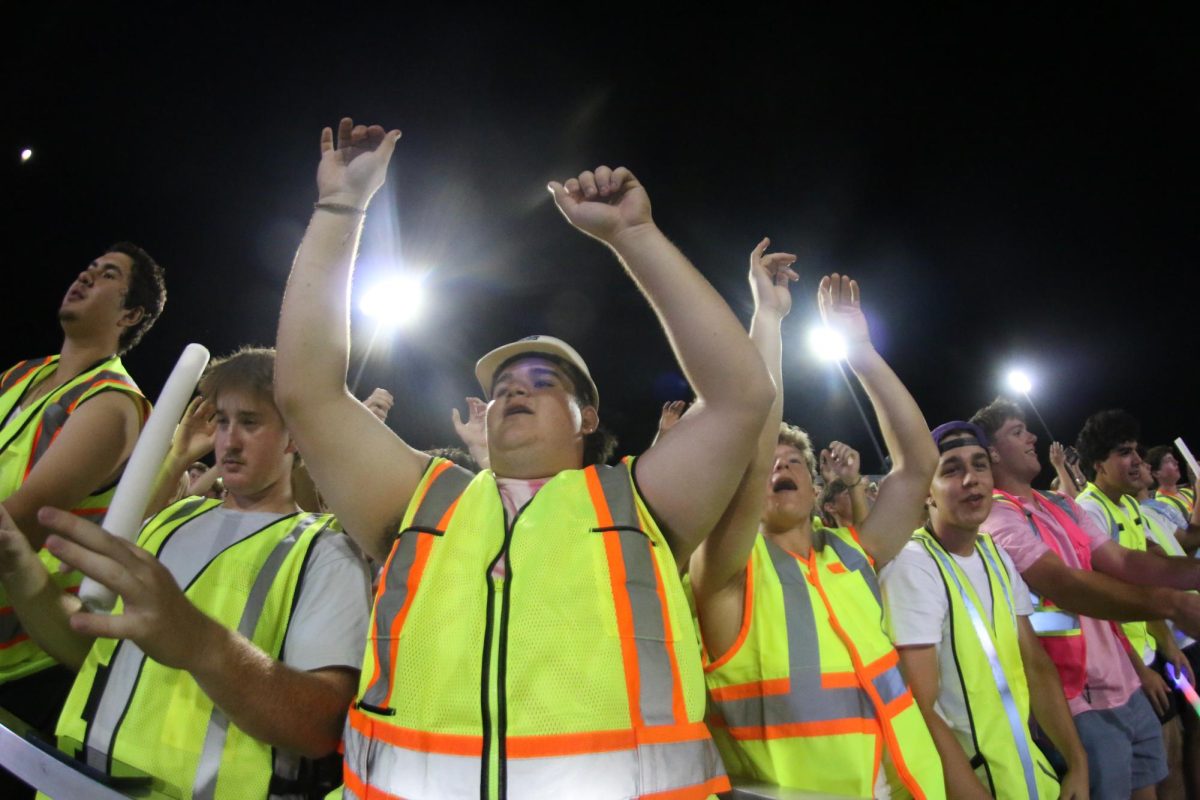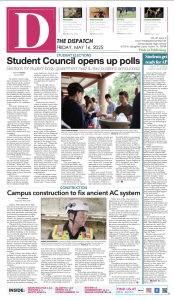Behind the Fence: Tower crane proves usefulness
December 13, 2019
Behind the fence that separates the old parts of Bowie and the new parts of Bowie, lots of work has been completed in the past semester. Construction has moved from the first floor of the garage to the second floor.
“Since the school year has started, lots of work has been done,” principal Mark Robinson said. “It is amazing to see how much work has been done in this time.”
Crews started pouring the first floor concrete slab at the end of November. The slab was poured in multiple sections due to the size of the slab. Crews started assembling concrete shores on top of the slab after the slab had cured enough to work on. Shores are vertical supports used to support the form work for the second floor.
“Now that we are finishing up the first floor, we are starting on the second floor,” project engineer Jack Whaley said. “It’s exciting to start building up.”
After the tower crane was constructed, crews have utilized the crane to work efficiently. The crews have set forms, moved concrete buckets, and moved materials with the crane.
“The crane has been one of our biggest time savers,” Whaley said. “Now that we are working on the second floor, the crane is even more useful because the forklifts can only reach so far.”
For students and staff on campus, some may have never seen a tower crane so closely like the tower crane on campus.
“I have never seen a tower crane up so closely,” senior Connor Malone said. “It spins around really quickly for such a large structure.”
Riggers who attach materials and forms use radio transceivers to communicate with the crane operator. Only certified riggers are allowed to work with the crane. Riggers have a sticker on their hard hats so that the crane operator can locate riggers from the cab of the crane.
“The riggers take extra precautions to ensure safety when moving objects with the crane,” Whaley said. “The crane also has sensors to make sure loads are managed properly.”
Work on the second floor has been started and considerable progress will be made over the winter break. Rain and precipitation has caused some delays in scheduling but crews have been busy catching up to stay on schedule.
“We plan accordingly for weather, we sometimes have to pick up days on Saturdays and find ways to kind of improve our process,” Whaley said. “We are on schedule to finish next summer.”







